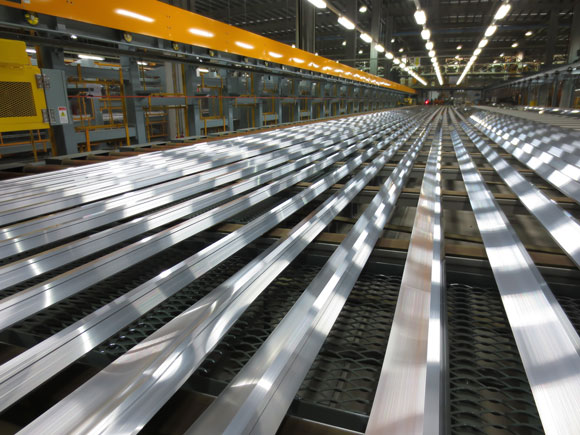Aluminum MMI: Index Near Three-Year Low as LME Aluminum Trades Sideways
The Aluminum Monthly Metals Index (MMI) remained flat this month at 82, with the majority of prices in the index increasing mildly, offset by a few declining values.
The current index value remains near a three-year low.
Free Partial Sample Report: 2020 MetalMiner Annual Metals Outlook
LME aluminum prices generally moved sideways in October but demonstrated strength late in the month, just as prices look set to drop through yet another support level of $1,700/mt. Prices hit as low as $1,713/mt during the month.
That movement appears halted for now, due to supply disruptions and future supply concerns.
SHFE Aluminum Prices Failed to Gain Steam
SHFE aluminum prices still appear constrained by a sideways pattern capped at around CNY 14,500/mt price band, with upward momentum looking weaker as the year has progressed.
Given recent positive PMI readings and improvements in China’s large-cap FXI, for instance, we should see aluminum prices react — unless excess supply exists in the market, stopping increased price momentum and/or demand remains weak in aluminum-intensive areas.
According to Q3 reporting for the Aluminum Corp of China Ltd, or Chalco, as reported by Reuters, aluminum sales dropped by 13.8% for the quarter, compared to Q3 2018, with sales totaling 940,000 tons. Production dropped 10.4% during the same period (July-September) to 950,000 tons.
The company reported significant raw material, energy and operating cost increases of late, ranging from 17% to 21%, during the quarter.
Chalco reported an average sales price of CNY 13,924/mt for Q3 2019, down by 4.2% compared to Q3 2018, with profits down by 47.7% for the first nine months of 2019.
Recently, prices dropped below CNY 14,000/mt — typically a critical break-even point for producers in China — to CNY 13,800/mt.
Supply Concerns Support LME Aluminum Prices
During the most recent round of corporate financial reporting, a couple of high-profile producers noted higher energy costs hurt profitability and indicated the need to upgrade production methods to more energy-efficient processes. The aforementioned is especially true given the energy-intensive nature of aluminum production, which will necessitate major investment costs.
Rio Tinto commented that closure of its aluminum smelter in New Zealand could be possible due to high energy costs hurting profitability.
Additionally, the price increase could have occurred as a result of speculative activity in that it coincided with a recent uptick in press reports covering aluminum as the green solution in the beverage can industry.
Coca-Cola’s Dasani brand of water will move to aluminum cans from plastic, joining PepsiCo’s move for its Aquafina brand. Ball, the jar company, recently created an aluminum cup to compete with plastic (now in test markets). The company began construction of its first dedicated aluminum cup manufacturing facility, with production expected to ramp up in Q4 2020.
Additionally, total LME warehouse stocks trended down to historical lows earlier this year and remained there, at around 1 million tons. SHFE stocks declined more dramatically this year, now down to under 300,000 tons from around 700,000 tons at the start of the year.
New LME Warehouse Rules Target Improved Data Tracking
The LME announced Nov. 1 it will proceed with a proposed package of measures aimed at the optimization of its warehouse network.
The new rules will require network warehouses to report stocks, even when stored outside of an LME location when that metal will be brought in at a later date.
Also, queue-based rent capping will increase to 80 days — from 50 days at present — over the course of nine months.
What This Means for Industrial Buyers
Aluminum prices found some momentum late in October, but what comes next remains unclear.
Buying organizations interested in tracking industrial metals prices with embedded forecasting should request a demo of the MetalMiner Insights platform.
Buying organizations seeking more insight into longer-term aluminum price trends may want to read MetalMiner’s Annual Metal Buying Outlook.
Free Partial Sample Report: 2020 MetalMiner Annual Metals Outlook
Actual Metal Prices and Trends
This month, China aluminum scrap prices increased by 2.4% to $1,805/mt, while Chinese aluminum primary cash prices increased by 1% to $1,975/mt.
Meanwhile, Chinese aluminum billet and bar prices declined by 0.8% and 0.7%, respectively, to $2,041/mt and $2,136/mt.
Korean prices showed strength across the board this month.
Korean commercial 1050 sheet increased by 2.4% to $3.04/kilogram, 5052 coil premium over 1050 increased by 2.2% to 3.21/kilogram, and 3003 coil premium over 1050 increased by 2% to $3.08/kilogram.
The LME primary three-month price increased by 1.6% over the course of the month to $1,747/mt after a couple of months of decline.
European commercial 1050 sheet and 5083 plate both increased again this month, rising by 0.8% and 1.4%, respectively to $2,475/mt and $2,837/mt.
India’s primary cash price dropped by 5.1% to $1.86/kg.






Leave a Reply